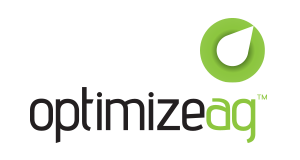Back Pay
Back Pay for Award Wages
Paying Award based employees at least the award rate is important, especially with STP2 data matching.
The Award rate increases always take effect in the first full pay period after the date of revision. For example, if the revision date is 1/07/2022 and the first day of the next pay period is 7/07/2022 that will be the pay period the new rates apply to and not the pay period that started before July and ended on 6/07/2022.
Updating the pay rates as soon as they become effective is the easiest option, but it’s not always practical. If Award based employees are paid under the Fair Work pay rates Back Pay should be calculated and paid as soon as possible.
We recommend that Back Pay calculations should be documented, and records kept to support any later enquiry, so our go to procedure is to use Excel.
Back Pay Calculation Steps
1. Check the new rates and penalty rates
If your industry body provides the rates use their summary (it’s usually easy to read!), or go to the Fair Work website & download the Pay Guide or use the Pay Calculator Tool.
2. Create a record in Excel
Export a Payroll report for each employee for the period the Back Pay covers, which includes the wage/penalty/allowance name, hours worked and rate of pay.
Add a column with the new rates, another column to calculate the difference between the old & new rates, and a third column to multiply the number of hours by the difference between the rates. Enter the formulas for each line and a total for the gross Back Pay.
Calculating the tax to withhold must be done manually using one of the methods in the ATO “Schedule 5 – Tax Table for Back Payments”. MYOB or Xero cannot work out the correct tax to withhold automatically. Include all of the exported reports & calculations used for the PAYG Withholding calculations in the spreadsheet.
Super applies so include a calculation for super at the relevant rate
Work out the Net Pay
3. Update the Payroll system with the new rates
The procedure for updating rates depends on the set up of the payroll system, but it usually requires changing the rates in the employee’s contact card, or in the pay item/wage category.
4. Do a test pay run to check that all employees will have the correct rates appear in the next pay run
5. Update the Standard Pay if Necessary
6. Pay the Employees their Back Pay
The back pay can be included in the next regular pay run, but we find it simpler to do an extra pay run, because it’s easier to see if the back pay in the pay run matches the calculations in the spreadsheet that way.
Each employee must have the Back Pay wage category/pay item available in their pay, so check that before you start if you can’t add it while you are entering the pay run.
Add the total gross Back Pay into the pay run, update the PAYGW tax, check the super and the Net Pay amounts back to the spreadsheet calculations.
If you process the Back Pay in an extra pay run make sure that no leave accruals are applied to the employee.
Then process the payment. Send out pay slips and let the employees know what the payment is for.
7. Remove the Back Pay wage category/item from the employee Standard Pay if it was added.
If you need any help, let us know
lisa@optimizeag.com.au

book your call now!
If you’d like to chat about this article, or how we can help your business, please book in a call with Lisa.
about Lisa
We empower managers of winery & regional ag businesses by providing financial insights, which frees up time for them to focus ON optimizing their business.
At OptimizeAg and OptimizeWine we love the creative energy in the agricultural and wine sectors and we’re excited to work with you, the owner or manager, in further optimizing your business processes to help your business not only succeed but to thrive.